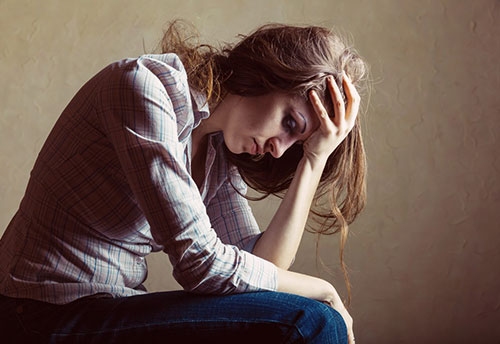People’s number of outbreaks varies. An individual who has genital HSV-2 has an average number of outbreaks of about four to five annually. An individual who has an oral HSV-1 has an average number of outbreaks, which is less than once annually.
 Under normal circumstances, more outbreaks occur amid the first year, and many individuals discover that outbreaks are less frequent and severe with respect to time. The first outbreak is typically the most agonizing and worst outbreak, which happens between 2 to 20 days the moment the individual has had contact with the virus. The injuries often leave between 2 to 3 weeks. Half of those with herpes are not having any more outbreaks the moment they have undergone the first occurrence of the symptoms. This is particularly valid if the infecting herpes was the HSV-1 type. Some individuals just get a few outbreaks, while others get numerous outbreaks. Individuals can have numerous outbreaks successively, one after the other, and for months or even in a year, they may not experience it anymore. Individuals who experience illnesses that debilitate the immune system like HIV and leukemia will probably experience more outbreaks, with symptoms that are really painful and also last for a long time.
Under normal circumstances, more outbreaks occur amid the first year, and many individuals discover that outbreaks are less frequent and severe with respect to time. The first outbreak is typically the most agonizing and worst outbreak, which happens between 2 to 20 days the moment the individual has had contact with the virus. The injuries often leave between 2 to 3 weeks. Half of those with herpes are not having any more outbreaks the moment they have undergone the first occurrence of the symptoms. This is particularly valid if the infecting herpes was the HSV-1 type. Some individuals just get a few outbreaks, while others get numerous outbreaks. Individuals can have numerous outbreaks successively, one after the other, and for months or even in a year, they may not experience it anymore. Individuals who experience illnesses that debilitate the immune system like HIV and leukemia will probably experience more outbreaks, with symptoms that are really painful and also last for a long time.
Basically, the ‘triggers’ of herpes (deciding precisely what prompts outbreak) are exceptionally individual, however, with time, many individuals figure out how to recognize, and in some cases maintain a strategic distance from, components that appear to reactivate HSV in their bodies. Poor diet, physical or emotional stress, illness, surgical trauma, steroidal medication (like the treatment of asthma), and friction in the genital region, as well as elongated exposure to bright and ultraviolet light (usually for oral herpes, like skiing weekend or beach trip) may be able to trigger the outbreak of a herpes.
The recurrence of outbreaks can frequently be overseen through impressive stress management, nutrition, getting sufficient rest, and healthy workouts. For individuals with continuous outbreaks, include itching using suppressive (day-to-day) treatment with any one of the antiviral treatments can decrease outbreak by about 80 percent. Also, you may start feeling some early warning signs that the outbreak may come soon. Signs include itching, tingling, and burning where you see sores before. Signs like these could also begin a couple of hours or days before the major outbreak occurs.
- What happens when herpes enters the body?
- Do I have to use condoms forever?
- How often do outbreaks occur?
- Is there a cure for Herpes?
- Where does the Herpes virus live in the body?
- Can herpes be transmitted to other parts of my body?
- Is Herpes infection related to HIV?
- Does everyone have the same Herpes symptoms?
- Can herpes affect my pregnancy and newborn?
- How to stop genital Herpes outbreaks?
- How common is herpes?


